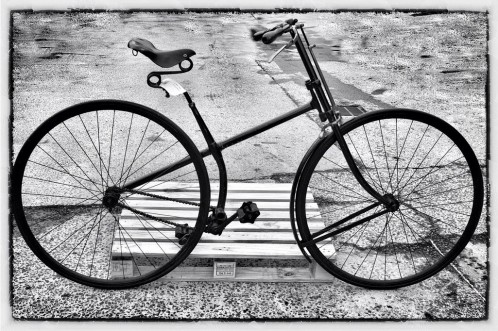 I first saw the news on Bike Biz that engineer and inventor Dr. Alex Moulton passed away this week at the age of 92. For any of you who aren’t familiar with his work, Dr. Moulton pioneered the small wheel bicycle in the early 1960s with the launch of his first full suspension bicycles. He was a true innovator who chose to look beyond the way things were traditionally done in order to create what he considered a better bike. As the Bike Biz article points out, “In the late 1950s, Dr Moulton’s design ideas were at odds with the accepted norms of the cycle industry. His development activities extended to construction methods and, whilst many of these are commonplace nowadays, the large section tube, extensive use of pressings and lugless construction of the original Moulton bicycles were revolutionary in 1962.”
I first saw the news on Bike Biz that engineer and inventor Dr. Alex Moulton passed away this week at the age of 92. For any of you who aren’t familiar with his work, Dr. Moulton pioneered the small wheel bicycle in the early 1960s with the launch of his first full suspension bicycles. He was a true innovator who chose to look beyond the way things were traditionally done in order to create what he considered a better bike. As the Bike Biz article points out, “In the late 1950s, Dr Moulton’s design ideas were at odds with the accepted norms of the cycle industry. His development activities extended to construction methods and, whilst many of these are commonplace nowadays, the large section tube, extensive use of pressings and lugless construction of the original Moulton bicycles were revolutionary in 1962.”
In addition to the Bike Biz piece, I noticed nice tributes to Dr. Moulton at Dezeen, TreeHugger, and many other places on the web. He may be gone, but he definitely left his mark.

About seventy years before Moulton debuted his first bike, J. S. Smith, proprietor of the Surrey Machinist Co. in London, created the Invincible, a clean looking bike which featured monoblades front and rear. Carlton Reid has a great piece on his “Roads Were Not Built for Cars“ blog about Smith’s late 19th century bike, which inspired later designs like the Mike Burrows designed Lotus Type 108 pursuit bike that was ridden by Chris Boardman in the 1992 Olympics (one of my personal favorite bike designs of all time). See additional pictures of the Invincible at Carlton’s post and in his Flickr stream. Like the original Moultons, it was a beautiful bike that influenced many of the designs that we are familiar with today.


Leave a Reply